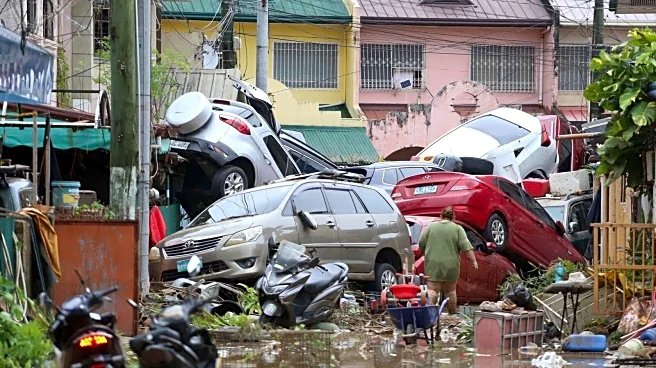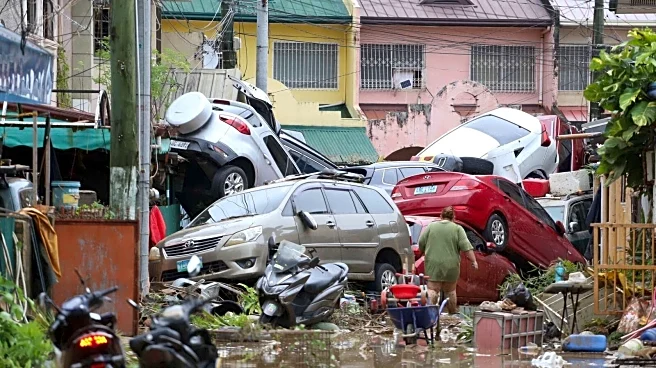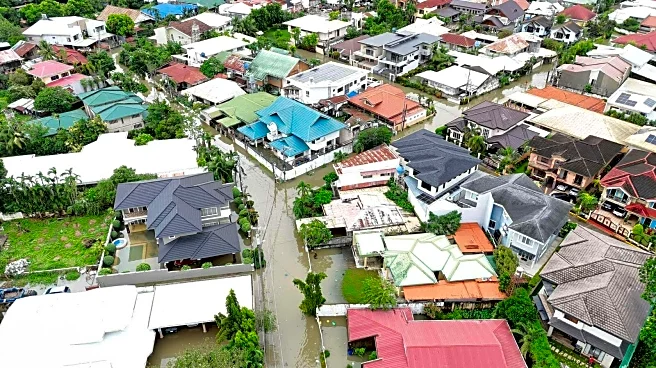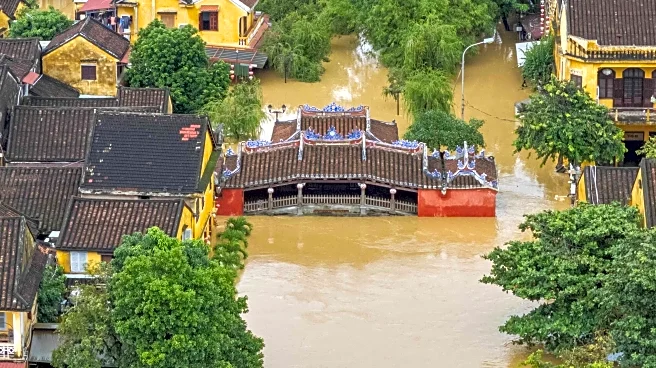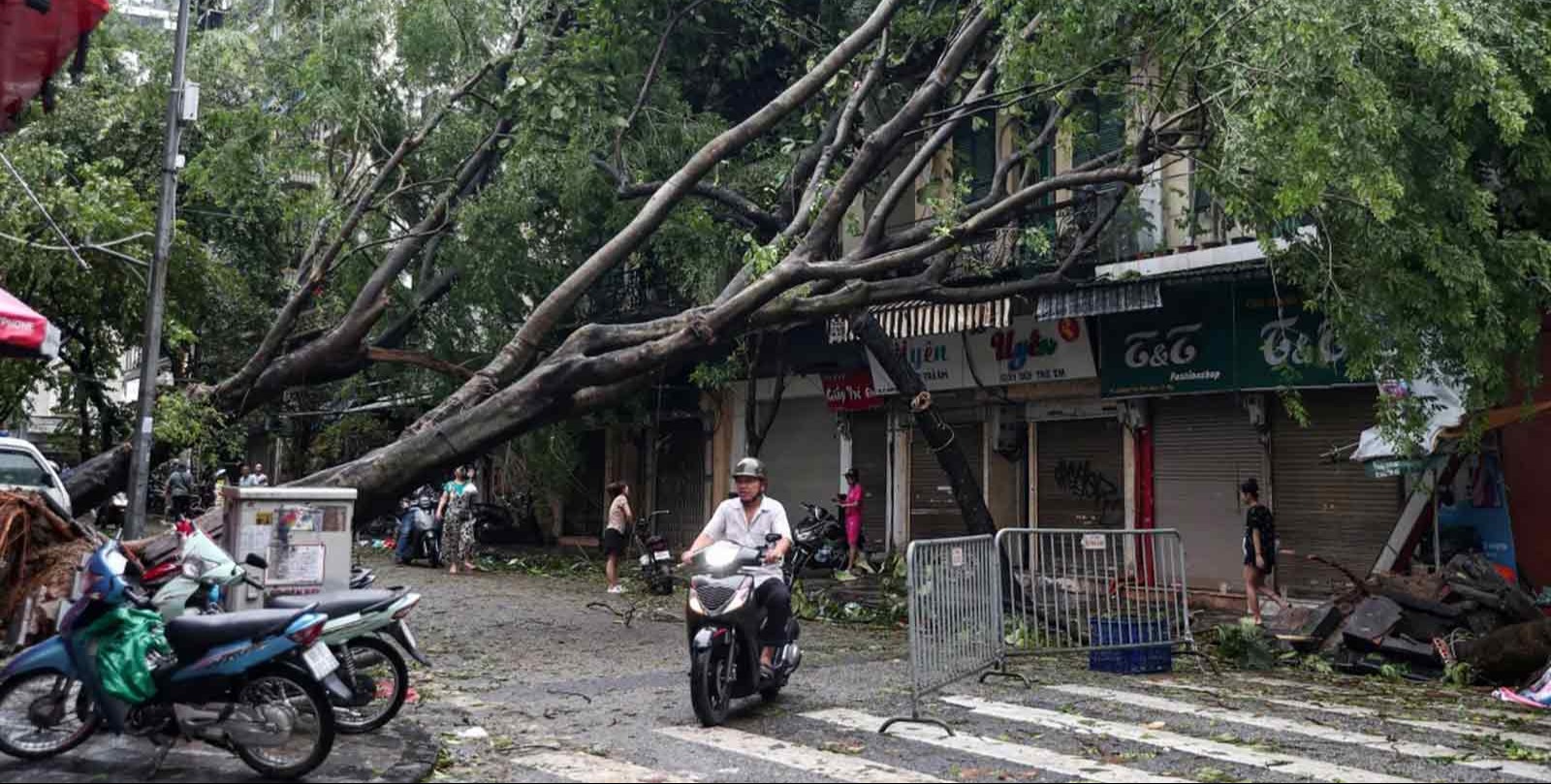What's Happening?
A Philippine air force helicopter crashed in Agusan del Sur province while en route to assist with Typhoon Kalmaegi relief efforts. The crash resulted in the deaths of five personnel aboard the Super Huey
chopper. The helicopter was deployed to provide humanitarian assistance to areas affected by the typhoon, which has caused widespread flooding and destruction in the central Philippines. The typhoon has left at least five people dead, with residents trapped on rooftops and cars submerged in floodwaters. The storm, with winds reaching 130 kph, is expected to move into the South China Sea soon.
Why It's Important?
The crash underscores the challenges faced by the Philippines in responding to natural disasters, given its vulnerability to typhoons, earthquakes, and volcanic activity. The loss of military personnel during relief operations highlights the risks involved in disaster response efforts. The typhoon's impact, including the displacement of tens of thousands and significant infrastructure damage, stresses the need for effective disaster preparedness and response strategies. The event may prompt a review of safety protocols for military and civilian disaster response operations.
What's Next?
Efforts are underway to locate and recover the bodies of the air force personnel involved in the crash. The typhoon is forecast to move away from the Philippines, allowing for recovery and rebuilding efforts to commence. Authorities will likely focus on providing aid to affected communities and restoring power and communication lines. The government may also assess the effectiveness of current disaster response strategies and consider improvements to mitigate future risks.
Beyond the Headlines
The incident may lead to discussions on the adequacy of resources allocated for disaster response in the Philippines. It could also raise questions about the safety and maintenance of military equipment used in such operations. The broader implications of frequent natural disasters on the country's economic stability and development may also be examined, highlighting the need for sustainable infrastructure and community resilience.


